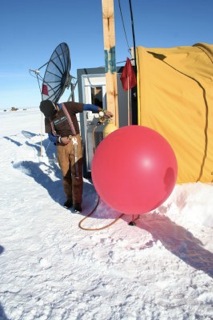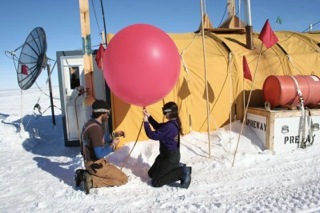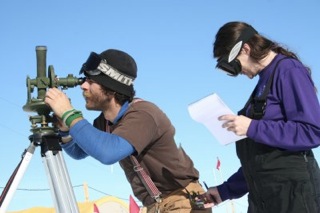Did you guess that the object in mystery photo #8 is a weather balloon?

Weather balloons are used frequently out at WAIS Divide. They are primarily used to measure the height of the ceiling, or height of clouds, so we can determine if it is safe for planes to land. The balloons are filled with a fixed volume of helium. Once the balloon is released, our weather observers check the elevation of the balloon at a one minute intervals until the balloon is out of sight. This allows them to determine the height of the ceiling. According to our weather observer, Jonathan, the average ceiling height for the month of January has been 1,500 ft. A 1,500 foot ceiling means it is safe for the LC-130 airplane to land at our camp.
Weather out here on the ice sheet is hard to predict, so constant monitoring is a must. For six hours prior to a flight, Jonathan and Stephanie, our weather crew, monitor the weather. This includes the barometric pressure, ground visibility, height of the ceiling, wind speed, and temperature. This intensive monitoring is to ensure that no weather is moving in that might prevent a landing or prevent the plane from leaving WAIS Divide. The LC-130's serve al of the U.S. camps across the continent. A delay at one camp can result in several delays for other camps that also depend on the planes for parts, food, and fuel.





Comments